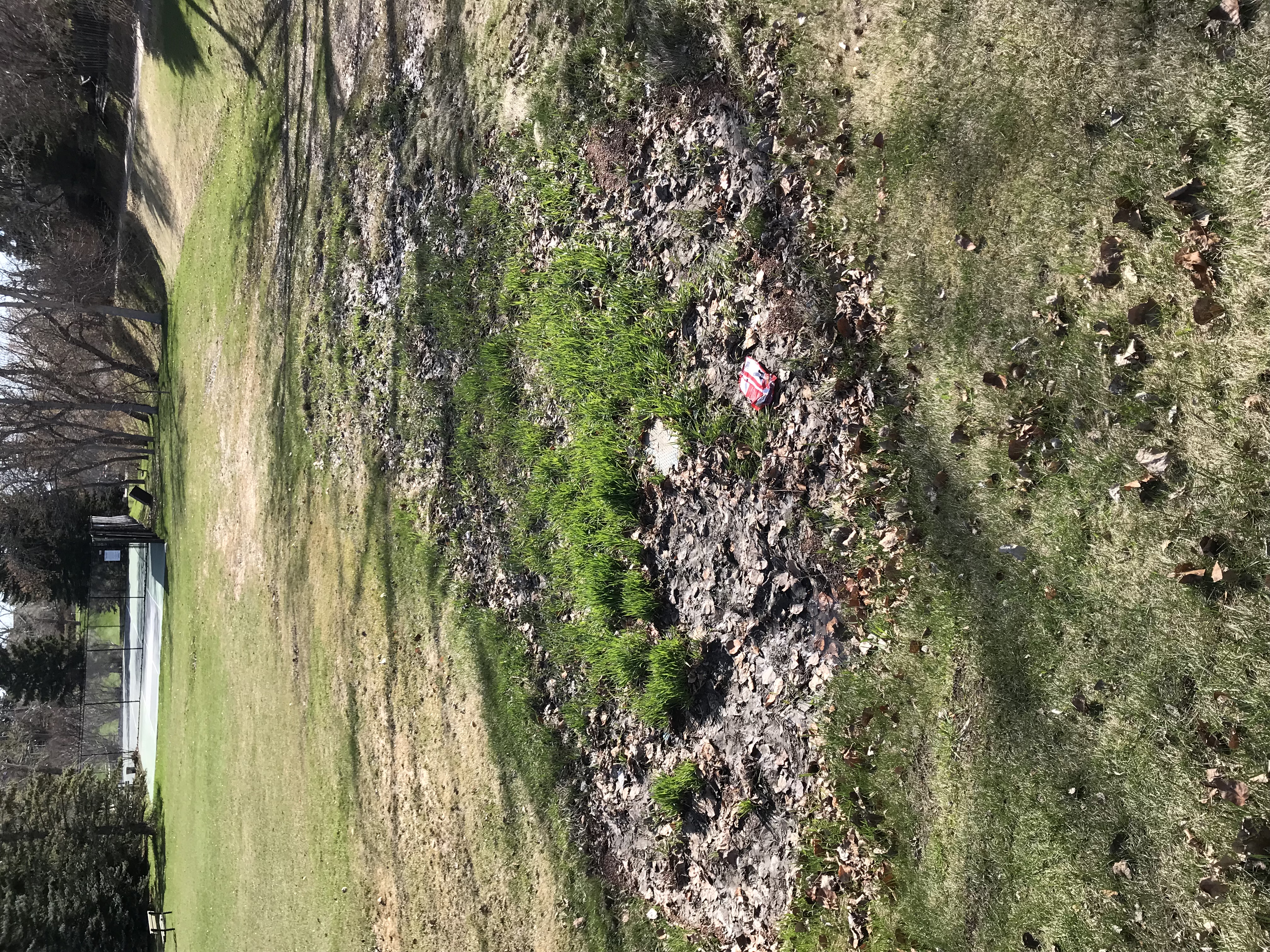Rain Gardens
Article by Monika Smith
Just west of the courts where Glendale’s ‘property’ ends there was a sloppy, wet area in May. Not enough to get a soaker, but enough that you paid attention and tried to get around it.
Some might recall that the Glendale Hall is located in a flat-bottomed valley. With somewhat steep slopes surrounding, this area once held water and was named ‘Glendale Lake’. How deep was this body of water? Does anybody know?
It was probably shallow. Recently, I came across a couple of aerial photos of the lake. In 1948, there is nothing there except for a couple of big trembling aspen groves – a sure sign that water was there for these trees.
Later, a 1953 aerial photo shows a big body of water some 45 acres is size stretching from the school through our park and the City parks to Sarcee Trail. Our hilly community, courtesy of glaciers shoving all those rocks and clay into Calgary, created a natural depression where water collected! When development reached our hilly bit of land with a big patch of water, there were thoughts of a lakeside community. Then, whatever the thinking was in 1955, possibly for safety, the lake was drained and filled. The community hall now sits on it.
Or it might have just disappeared again, as the lake seemed to be ephemeral. One year here, one not. And possibly seasonal, full in the spring and nothing in winter.
However, the park still gets an annual wet spot through water draining from a small culvert under 45 Street. Wouldn’t this be a great location for a rain garden?
Segue to your own yard. You can create a beautiful rain garden at end of your downspout. We have rainy months, and small barrels don’t have the capacity to capture what is coming of the roof. A rain garden can make use of this water.
Creating a rain garden near a downspout can offer an attractive garden area of a goodly size, which also controls runoff and some flooding before it enters our stormwater system.
Simply create a depression where the water is puddling or where you want it to puddle – usually a few meters from the house. Fill it with loose soil, and select plants, both perennial flowers and shrubs that will attract bees, butterflies, and birds. Nothing exotic, but you can aim for bullrushes as they have been planted in stormwater management areas that dry out later in the summer. Using native plants, once established, will require little to no water than that from the sky and no fertilization. The following native plants would thrive in a rain garden setting: Joe Pye Weed (Eupatorium maculatum); Tufted Hair Grass (Deschampsia cespitosa); Beebalm (Monarda fistulosa); Showy Milkweed (Asclepias ovalifolia); Goldenrod (Solidago canadensis); native willows (Salix spp); and Blazing star (Liatris spicata). They provide interesting foliage, colour, and height – a display that will wow you.
For a better understanding on how to capture or direct rain in your yard, check out rain gardens through the City of Calgary online resources.
Until next time,
Monika’s Grove

A noticeable wet spot that originates from a culvert under 45 Street. A good rain garden candidate site.
Click here to the Glendale Community News home page for the latest Glendale community updates.










